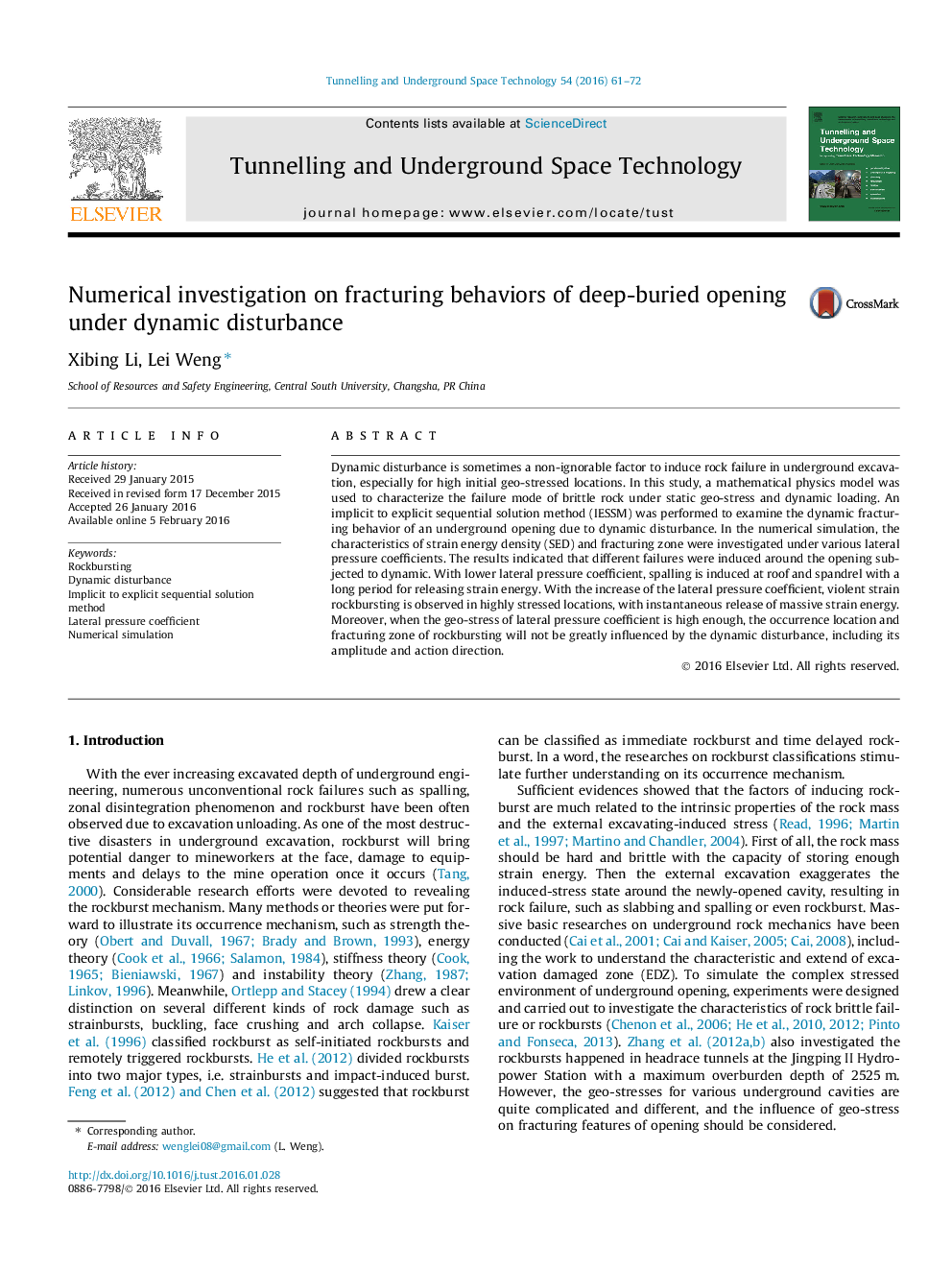| Article ID | Journal | Published Year | Pages | File Type |
|---|---|---|---|---|
| 312150 | Tunnelling and Underground Space Technology | 2016 | 12 Pages |
•An implicit to explicit sequential solution method was developed in FEM code.•SED index was introduced to enhance the understanding of rockburst and spalling.•The rupture mechanism of tunnel under dynamic loading is deeply investigated.•The influences of dynamic amplitude and direction on failure type are examined.
Dynamic disturbance is sometimes a non-ignorable factor to induce rock failure in underground excavation, especially for high initial geo-stressed locations. In this study, a mathematical physics model was used to characterize the failure mode of brittle rock under static geo-stress and dynamic loading. An implicit to explicit sequential solution method (IESSM) was performed to examine the dynamic fracturing behavior of an underground opening due to dynamic disturbance. In the numerical simulation, the characteristics of strain energy density (SED) and fracturing zone were investigated under various lateral pressure coefficients. The results indicated that different failures were induced around the opening subjected to dynamic. With lower lateral pressure coefficient, spalling is induced at roof and spandrel with a long period for releasing strain energy. With the increase of the lateral pressure coefficient, violent strain rockbursting is observed in highly stressed locations, with instantaneous release of massive strain energy. Moreover, when the geo-stress of lateral pressure coefficient is high enough, the occurrence location and fracturing zone of rockbursting will not be greatly influenced by the dynamic disturbance, including its amplitude and action direction.
